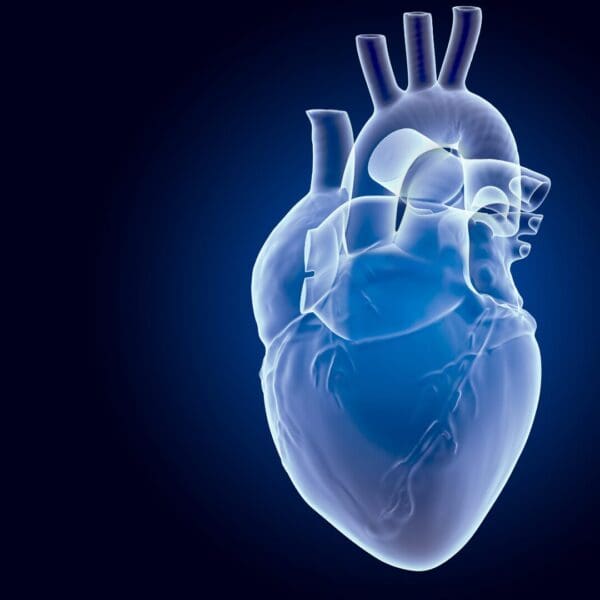Sirtuins are remarkable enzymes that have captured the attention of longevity researchers worldwide due to their potential to extend lifespan and promote overall health. Here at PUR-FORM, we hold the sirtuin enzymes in high esteem since they are essential to life and play a vital role in the mitochondria and nucleus of a cell. In addition, among a myriad of factors that influence aging, the role of sirtuin enzymes has emerged as a tantalizing area of study. With this in mind, I want to explore sirtuin enzymes’ functions, mechanisms, and implications for longevity and well being.
The sirtuin enzymes, technically known as Class III histone deacetylases (HDACs), form a family of proteins that impact various cellular processes, including DNA repair, metabolism, stress response, and longevity regulation. Discovered initially in yeast, sirtuins have since been identified in mammals, including humans. They play a critical role in various cellular processes. Seven known sirtuin enzymes are found in humans, designated as SIRT 1 to SIRT 7. These enzymes operate in different cellular compartments and participate in distinct biological processes, including DNA repair, metabolism, inflammation, and circadian rhythm regulation. Their ability to modify proteins through deacetylation is at the heart of sirtuins’ function. This modification involves the removal of an acetyl group from specific amino acids on target proteins. This process can affect the protein’s function and interaction with other proteins. By doing so, sirtuins can regulate the activity of these proteins, impacting various cellular pathways.
One of the most well-studied sirtuins, SIRT1, has been linked to regulating genes associated with longevity. It achieves this by deacetylating certain transcription factors, such as FOXO and p53, influencing cell survival and stress responses. A transcription factor is a protein that regulates gene expression by binding to specific DNA sequences. These factors enter the nucleus and direct the genes to “transcribe” or “write” the directions to produce different proteins. Among the family of sirtuin enzymes, SIRT 1 is a crucial regulator of longevity and cellular health. Its impact on many cellular processes has garnered immense attention, painting it as a potential fountain of youth at the molecular level. Let’s delve deeper into the remarkable functions and mechanisms of SIRT 1.
Mechanisms of SIRT 1
SIRT 1 resides predominantly in the nucleus of cells. One of the primary roles of SIRT 1 is to regulate gene expression by deacetylating specific transcription factors and co-regulators. It removes acetyl groups from target proteins, altering their structure and function. Notably, SIRT 1 interacts with transcription factors like FOXO (Forkhead Box O) and p53, which are associated with cellular stress responses, DNA repair, and apoptosis. By deacetylating these transcription factors, SIRT 1 influences the transcription of genes involved in stress resistance, DNA repair, and metabolic processes. The activation of SIRT 1 can trigger a cellular response that enhances the cell’s ability to cope with various stressors and promote longevity.
SIRT 1’s impact on metabolism is a significant facet of its role. It interacts with a protein called PGC-1α (Peroxisome Proliferator-Activated Receptor Gamma Coactivator 1-Alpha), a master regulator of mitochondrial function and energy metabolism. SIRT 1 and PGC-1α orchestrate events that boost mitochondrial biogenesis, enhance energy production, and improve metabolic efficiency. This interaction contributes to overall metabolic health and resilience. One of the most intriguing aspects of SIRT 1 is its ability to mimic the effects of caloric restriction—a dietary intervention known to extend the lifespan of various organisms. Caloric restriction has been linked to increased SIRT 1 activity, and it’s believed that this activation contributes to the benefits of reduced calorie intake. Interestingly, compounds like resveratrol, found in red grapes and wine, have been shown to activate SIRT 1 and mimic some effects of caloric restriction. This connection has led to widespread interest in the potential health benefits of these compounds and their potential to enhance longevity.
SIRT 1’s multifaceted functions have prompted extensive research into its role in aging and age-related diseases. Reduced SIRT 1 activity has been associated with various age-related conditions, including neurodegenerative disorders like Alzheimer’s and Parkinson’s and metabolic and cardiovascular diseases. The question that begs is, what about the other sirtuin proteins?
Exploring Other Sirtuin Proteins
SIRT 2 is in the cytoplasm. SIRT 2 regulates cellular processes related to the cytoskeleton, cell cycle progression, and metabolism. It influences microtubule dynamics and has implications for neurodegenerative diseases. Sirt2 acts like a cell cycle traffic cop that helps cells follow the proper schedule for growing and dividing. It ensures cells move slowly through their growth and division process. It also acts as a cell skeleton organizer. Sirt 2 helps organize a part of cells called microtubules. The microtubules are like tiny highways that help move things around the cell. SIRT 2 helps control how your body uses sugars and fats for energy like a manager making sure the correct fuel is used efficiently.
SIRT 3 is another member of the sirtuin family of proteins, and it’s mainly found in the mitochondria, the energy-producing structures inside our cells. SIRT 3 plays several essential roles in maintaining cellular health and functionality. SIRT 3 is a key player in regulating energy production within cells. It helps optimize the process of turning nutrients from our food into energy by influencing the activity of enzymes involved in energy production pathways, such as the citric acid cycle (also known as the Krebs cycle) and oxidative phosphorylation. SIRT 3 helps protect cells from damage caused by harmful molecules called reactive oxygen species (ROS) or free radicals. These molecules can harm cellular components, and SIRT 3 contributes to keeping their levels in check, which is vital for overall cell health. SIRT 3 has been linked to the regulation of metabolism, mainly how our bodies use and store energy. It can influence processes like fat metabolism and thermogenesis related to weight management. SIRT 3 may contribute to longer-lasting, healthier cells by promoting efficient energy production and cellular health. SIRT 3 also helps maintain proper mitochondrial functioning. It supports repairing and removing damaged mitochondrial components, helping prevent dysfunction that could lead to various health issues. SIRT 3 is believed to have a role in preventing cancer by helping to control cell growth, repair DNA damage, and regulate metabolism. It might act as a tumor suppressor in specific contexts as well. SIRT 3’s protective effects also extend to the nervous system. It has been suggested to play a role in reducing damage caused by brain injuries and neurodegenerative diseases.
SIRT 4 is also localized in mitochondria. SIRT 4 influences energy metabolism and insulin secretion. SIRT 4 is known to regulate metabolism by modulating the levels of certain enzymes. It acts as a “brake” on cellular processes that consume energy, such as the breakdown of sugars and fats. This function is thought to help cells prioritize energy conservation when nutrients are scarce. SIRT 4 also plays a role in regulating insulin secretion from pancreatic beta cells. It can inhibit insulin secretion, helping fine-tune the body’s response to changes in blood sugar levels. SIRT 4 has a specific role in regulating the metabolism of amino acids, which are the building blocks of proteins. It can modify enzymes involved in amino acid breakdown, affecting how cells use amino acids for energy production. Just like SIRT 3, SIRT 4 is involved in maintaining mitochondria’s health and proper function. It helps in preventing mitochondrial dysfunction and maintaining cellular energy balance.
SIRT 5 operates as a cellular conductor, ensuring that the machinery of metabolism runs in harmony. Nestled within mitochondria, SIRT 5 is like a molecular maestro fine-tuning the performance of critical proteins. It removes certain chemical tags, succinyl, and malonyl groups, from proteins. These tags are like switches that can slow or speed up proteins’ functions. SIRT 5’s role is to flip these switches off carefully, allowing proteins to work optimally. SIRT 5 is essential in the realm of metabolism. It wields its abilities to regulate enzymes linked to amino acid breakdown, fatty acid metabolism, and the energy-generating tricarboxylic acid (TCA) cycle. By managing these enzymes, SIRT 5 impacts the efficiency of crucial metabolic pathways. In health and disease, SIRT 5 holds intriguing promise. Dysregulated metabolism underpins conditions like metabolic disorders, cancer, and neurodegenerative diseases. Understanding SIRT 5’s influence on these processes could unveil avenues for therapeutic interventions and insights into managing such ailments.
SIRT 6 primarily resides in the cell’s nucleus and affects various genomic and metabolic processes. One of its most notable functions is its involvement in maintaining genomic stability. SIRT 6 plays a crucial role in repairing DNA damage, preventing the accumulation of mutations that can lead to aging and disease. SIRT 6 plays a role in epigenetic regulation, which involves modifications to DNA and its associated proteins that influence gene expression without altering the underlying DNA sequence. SIRT 6 has been found to deacetylate histones, the proteins that package DNA into a compact structure. Doing so can impact gene expression patterns, influencing various cellular processes such as differentiation, development, and responses to stress. By promoting DNA repair pathways, SIRT 6 contributes to the overall integrity of the genome. Moreover, SIRT 6 has been linked to glucose metabolism and insulin sensitivity. It interacts with proteins that regulate glucose homeostasis, making it a potential target for interventions aimed at combating metabolic disorders like type 2 diabetes.
SIRT 7 is primarily localized in the cell nucleus and intimately shapes various genomic and metabolic processes. One of its most intriguing roles is regulating ribosomal RNA (rRNA) genes, which are essential for protein synthesis. SIRT 7 modulates rRNA transcription, ensuring proper ribosome assembly and function. This molecular tuning plays a vital role in cellular processes, impacting protein synthesis, cell growth, proliferation, and overall health. Furthermore, SIRT 7’s activities extend beyond the nucleus. It has been associated with mitochondrial homeostasis, which influences energy production, oxidative stress, and metabolism. This dual role of SIRT 7 in both the nucleus and mitochondria highlights its versatile nature and impact on diverse cellular functions.
Sirtuins and Aging
Research into sirtuin enzymes has opened new avenues for understanding the molecular basis of aging and age-related diseases. Sirtuin enzymes offer a captivating glimpse into the mechanisms that underlie aging and cellular health. Their role in deacetylating proteins and regulating critical cellular pathways has inspired researchers to delve deeper into the potential of sirtuin-targeted interventions for extending lifespan and promoting overall well-being. While the path towards harnessing sirtuin enzymes for practical applications is still unfolding, their discovery has undoubtedly paved the way for exciting advancements in longevity and healthspan.
As science continues to unveil the secrets of sirtuins, the prospect of healthier, more vibrant aging remains an exciting possibility as researchers uncover the intricate network of sirtuin interactions. Several pharmaceutical companies are actively exploring sirtuin-targeting compounds as potential treatments for age-related conditions like neurodegenerative diseases, metabolic disorders, and cancer.
Compounds that May Boost the Power of Our Sirtuins
Some compounds suggested to stimulate sirtuin enzymes, particularly SIRT1, include the following.
1. Resveratrol: Found in red wine and grapes, resveratrol has been extensively studied for its potential to activate SIRT1. It is thought to mimic the effects of calorie restriction and has been associated with various health benefits in animal studies. However, the extent of its impact on humans remains debated.
2. Nicotinamide Adenine Dinucleotide (NAD+): NAD+ is a coenzyme involved in various cellular processes, including those regulated by sirtuins. NAD+ levels decline with age and boosting NAD+ levels has been proposed as a potential way to enhance sirtuin activity. Precursors of NAD+, such as nicotinamide riboside (NR) and nicotinamide mononucleotide (NMN), have gained attention as likely supplements. We strongly recommend their use.
3. Quercetin: This flavonoid is found in various fruits and vegetables. Some research suggests that uercetin may impact sirtuin activity, particularly SIRT 1.
4. Fisetin: Another flavonoid found in fruits, fisetin, has been investigated for its potential to stimulate sirtuin activity and promote healthspan.
5. Pterostilbene: Like resveratrol, pterostilbene is found in blueberries and grapes. It has been suggested to have similar effects on sirtuin activation as resveratrol.
6. Curcumin: Derived from turmeric, curcumin has been studied for its potential health benefits. Some research suggests it might influence sirtuin activity.
7. Epigallocatechin Gallate (EGCG): EGCG is a compound found in green tea. It has been proposed to activate SIRT1 and potentially have various health-promoting effects.
8. Senultra: This is a compound designed to help eliminate senescent cells. What we like about it is that it contains quercetin, fisetin, and curcumin in one formula.
9. Urolithin A: Urolithin A has been shown to interact with sirtuins, particularly SIRT1. Urolithin A’s interaction with sirtuins, particularly SIRT1, might contribute to its anti-inflammatory properties. It also is involved in the recycling of mitochondria which is called mitophagy.
10. Berberine, spermidine, citrulline, biotin, astaxanthin, lipoic acid, and sulforaphane may complement the utility of Sirt1 activators for aiding autophagy, mitophagy, and mitochondrial biogenesis.
11. Melatonin: There is a complex relationship between melatonin and sirtuins, and it involves several potential mechanisms. Some studies suggest melatonin might directly interact with sirtuin enzymes, particularly SIRT 1. Melatonin has been reported to activate AMP-activated protein kinase (AMPK), a cellular energy sensor that influences various metabolic pathways, including longevity and stress response. Activated AMPK can then indirectly promote sirtuin activity, as AMPK has been shown to enhance the expression and activity of SIRT 1. Melatonin and sirtuins interact with FOXO (Forkhead box O) transcription factors, which regulate cell survival, stress resistance, and longevity genes. The FOXO (Forkhead box O) pathway is a critical signaling network that regulates various cellular processes, ranging from apoptosis (programmed cell death) and DNA repair to stress response and metabolism. FOXO proteins play a pivotal role in mediating the cellular response to a plethora of internal and external stimuli, including growth factors, oxidative stress, DNA damage, and nutrient availability. Melatonin’s effects on FOXO proteins might influence sirtuin activation.
Modalities That May Increase Sirtuins Activity
1. Intermittent hypoxia therapy, which bounces between hypoxia and hyperoxia, will increase sirtuin function.
2. Hyperbaric Oxygen Therapy (HBOT) will increase sirtuin function, especially SIRT 1 function.
3. Cryogenic temperatures increase blood levels of SIRT1 and SIRT3 and systemic antioxidant defense. This can be achieved using our whole-body cryotherapy or the cold plunge pool.
4. Infrared saunas will increase sirtuin activity via its effects as a cell stressor.
5. EBO2, which involves blood oxygenation and ozonation, stimulates the NRF2 pathway. By stimulation of the NRF2 pathway, the sirtuins will be activated.
6. Inhalable hydrogen gas therapy. Hydrogen gas may influence cellular signaling pathways, some of which might intersect with sirtuin regulation. For example, hydrogen gas has been suggested to activate the AMP-activated protein kinase (AMPK) pathway, which regulates metabolism and longevity. AMPK activation has been linked to increased sirtuin activity, particularly SIRT1. It is a critical anti-aging pathway.
Lifestyle Modifications
In addition to supplements, several other methods have been suggested to stimulate sirtuin enzymes, particularly SIRT1. These methods are often related to lifestyle choices and behaviors that can impact the activity of sirtuins and promote overall health. Keep in mind that the effectiveness of these methods can vary and that the field of sirtuin research is still evolving.
Here are some strategies:
1. Caloric Restriction: Caloric restriction involves reducing calorie intake while maintaining proper nutrition. This practice has been shown to activate sirtuin enzymes, particularly SIRT1. It is thought that caloric restriction mimics some of the effects of fasting, leading to increased sirtuin activity and potential health benefits.
2. Intermittent Fasting: Intermittent fasting involves cycling between periods of eating and fasting. Specific fasting regimens, such as time-restricted eating or alternate-day fasting, have been suggested to increase sirtuin activity. Fasting triggers cellular stress responses that might enhance sirtuin function.
3. Exercise: Regular physical exercise has been associated with increased sirtuin activity. Aerobic and resistance exercises have been shown to enhance SIRT 1 expression and activity. Exercise also contributes to overall metabolic health and longevity.
4. Cold Exposure: Cold exposure, such as cold showers or cold water immersion, has been proposed to activate sirtuin enzymes. The stress response induced by exposure to cold temperatures may trigger sirtuin-related pathways.
5. Polyphenol-Rich Foods: Foods rich in polyphenols, such as fruits, vegetables, green tea, and dark chocolate, have been suggested to have potential sirtuin-stimulating effects. These compounds may support sirtuin activity and overall health.
6. Stress Management: Managing stress through techniques like mindfulness meditation, yoga, and deep breathing exercises might indirectly impact sirtuin activity. Chronic stress can affect cellular health and contribute to aging, so reducing stress may support sirtuin function.
7. Sleep Quality: Adequate and restorative sleep is essential for overall health and cellular function. Poor sleep quality and insufficient sleep have been linked to decreased sirtuin activity.
8. Healthy Diet: Consuming a well-balanced diet rich in nutrients, antioxidants, and anti-inflammatory compounds can support cellular health and potentially enhance sirtuin activity.
9. Maintaining a Healthy Weight: Obesity and excess adiposity have been associated with reduced sirtuin activity. Maintaining a healthy weight through proper diet and exercise can positively impact sirtuin enzymes.
Summary
Our PUR-FORM clinic prioritizes the exploration of sirtuin enzymes in our pursuit of advancing healthy aging, owing to the pivotal role these enzymes play in a spectrum of cellular processes crucial for longevity and health span. With a spotlight on the prominent SIRT 1, sirtuins stand as vanguards in the orchestration of DNA repair mechanisms, cellular stress responses, metabolic equilibrium, and dampening inflammation. By orchestrating the activation of sirtuins through various modalities and natural bioactive agents like resveratrol or urolithin A, the clinic can amplify mitochondrial vitality, instigate autophagic cleansing, and fortify cellular fortitude against adversities. Recognizing that sirtuin activity tends to wane with age, proactively enhancing their function holds the promise of ameliorating age-associated cellular debilitation and aligns seamlessly with the clinic’s dedication to comprehensive, evidence-driven methodologies addressing the foundational aspects of aging. Through this focus on sirtuins, the clinic underscores its commitment to innovative interventions that offer prospects of elongating healthspan and fostering an elevated quality of life for individuals as they age.














